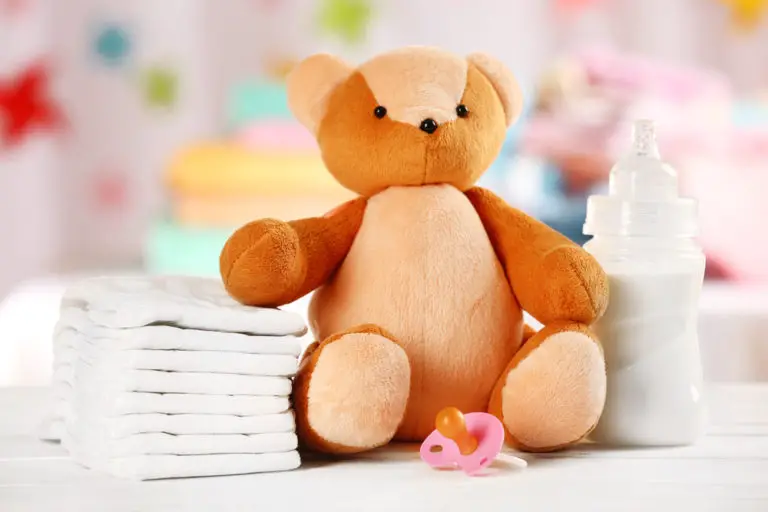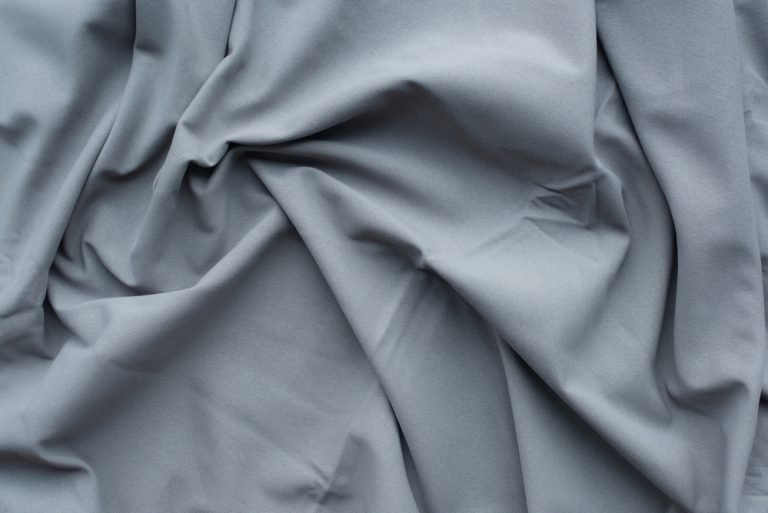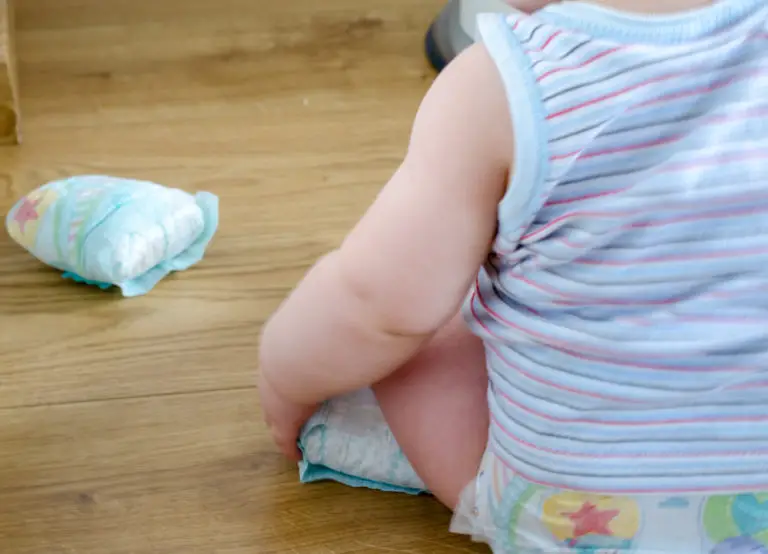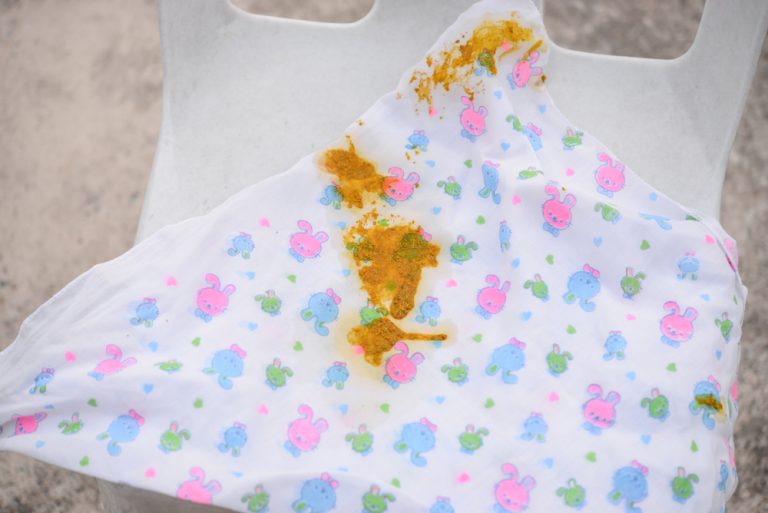Pocket Cloth Diapers: The Beginner’s Guide (2024)
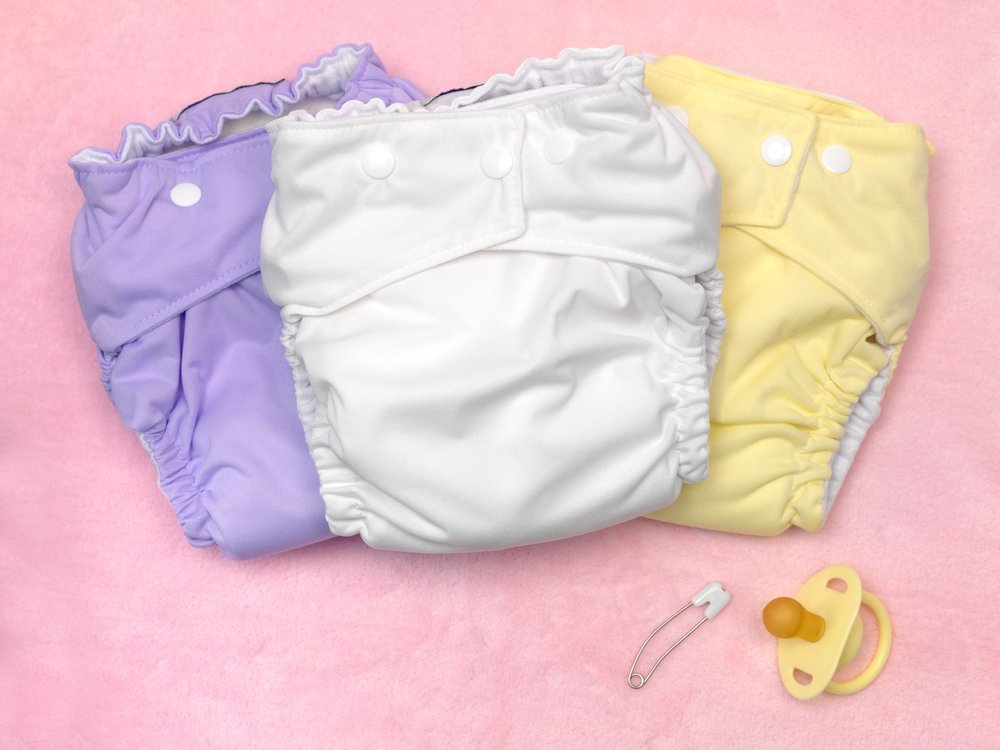
A pocket cloth diaper is a popular cloth diapering style due to its ease of use and ability to absorb. It’s a two-piece system that involves sliding absorbent inserts into a pocket in the midsection of the diaper.
The pocket is a gap between the outer waterproof layer and the inner stay dry layer. Parents can find pocket diapers offered by many cloth diaper brands.
- What Are Pocket Cloth Diapers?
- All-in-Ones vs. Pocket Cloth Diapers
- For Whom are Pocket Diapers Best for?
- What Materials Are Used in Pocket Diapers?
- How Much Do Pocket Cloth Diapers Cost?
- Benefits of Pocket Cloth Diapers
- Downsides of Pocket Cloth Diapers
- How to Use Pocket Cloth Diapers?
What Are Pocket Cloth Diapers?
Pocket cloth diapers consist of two layers and additional pocket inserts. The outer PUL or waterproof layer is lined with a polyester stay dry layer.
This piece snaps onto your baby just like a disposable diaper. However, before placing the diaper onto your baby, you need to stuff the pocket layer with absorbent inserts.
A pocket diaper needs to be stuffed with the inserts to make them stay on your baby and make it absorbent. A pocket diaper insert can be made from various materials, including bamboo, cotton, microfiber, or hemp.
Some people also use prefolds or flats folded up as pocket diaper inserts. Using prefolds in pocket diapers is economical because prefolds can be repurposed as cleaning cloths, burb cloths, and rags.
Pocket diapers are adjustable and can usually fit babies from 8lbs to 35lbs, making them a long-term investment.
All-in-Ones vs. Pocket Cloth Diapers
While some consider all-in-one diapers the gold standard of cloth diapering due to their simplicity, many parents also love pocket diapers. I used pocket diapers myself and found them easy to use!
An all-in-one takes much of the guesswork out of cloth diapering because everything is already put together. All that’s left for the parent to do is adjust the diaper to the correct size.
The downside is that you may still need to add extra absorbency layers to prevent leaks or fill in gaps when your baby is between sizes. This means purchasing even more supplies on top of the all-in-one’s expensive price tag.
Pocket-style cloth diapers are not the cheapest diaper style, but they are less expensive than all-in-ones as a total cost. As with all styles of cloth diapers, prices vary, but in general, you will pay between $15-$40 for a quality pocket diaper.
For example, a buttery soft Charlie Banana one-size pocket diaper is $26.99 a piece, but when buying in bulk you can save 10%. And each diaper comes with 2 inserts meaning you can use each 2x more than each all-in-one diaper.
In comparison, one Grovia all-in-one Organic diaper costs $25.95. When you consider you will need a minimum of 15 diapers, and in reality, more like 30, that price difference can add up.
Yet, all-in-one diapers are unbeatable when it comes to travel and daycare.
For Whom are Pocket Diapers Best for?
Pocket cloth diapers are easy to use and care for, making them an excellent choice for first-time or inexperienced cloth diaper users.
They require some preassembly because the pockets need to be stuffed, but you can easily stuff several at a time while watching a TV show or while your baby is playing nearby.
The pocket-style diaper also has a slightly shorter dry time than all-in-ones because they are less thick. Since most diaper manufacturers recommend air drying your cloth diapers, the quick dry time might be beneficial to those who want to use fewer diapers or don’t have as much time to commit to washing and drying as others.
If you are cloth diapering at night, you can stuff pocket diapers with ultra-absorbent inserts. You can also use a wool cover over the top at night to prevent leaks while your baby is sleeping.
What Materials Are Used in Pocket Diapers?
The outer layer of a cloth pocket diaper is made from a PUL fabric. PUL is a fabric that has been covered with a thin plastic laminate, effectively making it waterproof.
The inner layer of a pocket diaper is made from a polyester microfleece layer. While some polyester should not directly touch your baby’s skin, microfleece is safe, soft, and wicks away moisture, preventing diaper rashes.
The inserts for pocket diapers can be made from various materials or blends. The most common are microfiber, bamboo, and hemp.
Microfiber cannot be placed directly next to your baby’s skin. Still, microfiber is a popular choice since the insert goes inside a pocket, and it is the most absorbent of the material available.
Bamboo is popular because it is soft, hypoallergenic, and stays soft even after repeated washes. Hemp inserts are highly absorbent, so they make an excellent, all-natural insert to use overnight.
How Much Do Pocket Cloth Diapers Cost?
On average one-size pocket diapers cost about $15 to $30 apiece. Pocket diapers are typically sold in sets of six. A set of inserts usually comes with the diapers, but many people buy additional inserts to double up.
Inserts are often sold in sets of 10-12 and range in price depending on the material. Microfiber is the most cost-effective and costs approximately $4 a piece. Bamboo inserts are more expensive and run roughly $7 a piece.
If you decide to stuff your pocket cloth diaper with prefolds, a set of cotton prefolds will cost you about the same as a set of microfiber inserts.
You may also wish to line your cloth diapers with disposable liners; these liners make poop clean up simple and easy!
Liners cost about $25 for 400 pieces. Since they are disposable, you will need to purchase them as needed, but 400 liners will last you nearly a month.
Also read: Best Pocket Diapers
Benefits of Pocket Cloth Diapers
Pocket nappies have many benefits and upsides.
One of the upsides of pocket diapers is that they are easy to use and allow fast diaper changes. If you plan to have family or friends watch your baby frequently, you may want to consider using pocket diapers.
Pockets diapers are one of the few styles of cloth diapers that child care centers may accept, which is another plus.
Washing pocket diapers is also simple, and since you can remove the insert, they can be cleaned more thoroughly than all-in-ones. Because of the two separate pieces, they also dry faster.
Lastly, pocket diapers are extremely popular and made by so many different diaper manufacturers that you are guaranteed to find prints and patterns that fit your personality and budget!
Downsides of Pocket Cloth Diapers
To use pocket diapers, they need to be pre-stuffed or assembled ahead of time.
Some parents find this time-consuming and annoying, but it shouldn’t be that much of an inconvenience with a bit of planning and preparation.
Those same inserts need to be removed before washing, which can be a little gross or unpleasant.
Pocket diapers are more costly than flats and prefolds but less expensive than all-in-ones or hybrids. You pay slightly more for convenience and ease of use.
It is also possible that the velcro and snaps can wear down and break with repeated washings. You can replace the elastic, but it is a time-consuming process; most people find it easier just to buy a new diaper to replace the broken one rather than attempt to fix it.
Cloth diaper pockets have a limited size, so if you overstuff them, it can cause compression leaks.
How to Use Pocket Cloth Diapers?
To put on cloth diapers, you must first stuff them with an insert. Most people have their diapers preassembled to make this step go quicker.
Next, you fasten the diaper just as you would a disposable diaper. Most pocket diapers use either snaps or Velcro as a fastener.
When removing the diaper, clean out any poop with a diaper sprayer or scraper and remove the insert from the pocket. You can toss both the diaper and the insert into the diaper pail until it is time to wash.
Pocket diapers, like all other cloth diapers, should be washed using laundry detergent approved for cloth diapers and then hung to air dry.
Air drying in the sunshine is best, but you can use laundry racks or lines in your bathroom or home if that is not possible.

Laurel Davidson
Laurel brings her passion for parenting and years of problem-solving experiences to ParentingMode. She is the editor of ParentingMode, ensuring that the content is relevant and valuable to the readers. Laurel received her master’s degree in public administration with a certificate in economic development. She is a stay-at-home mom, raising two adorable kiddos, Aurora and Thomas. Laurel enjoys sharing her experience as a parent, traveling, and good food.

